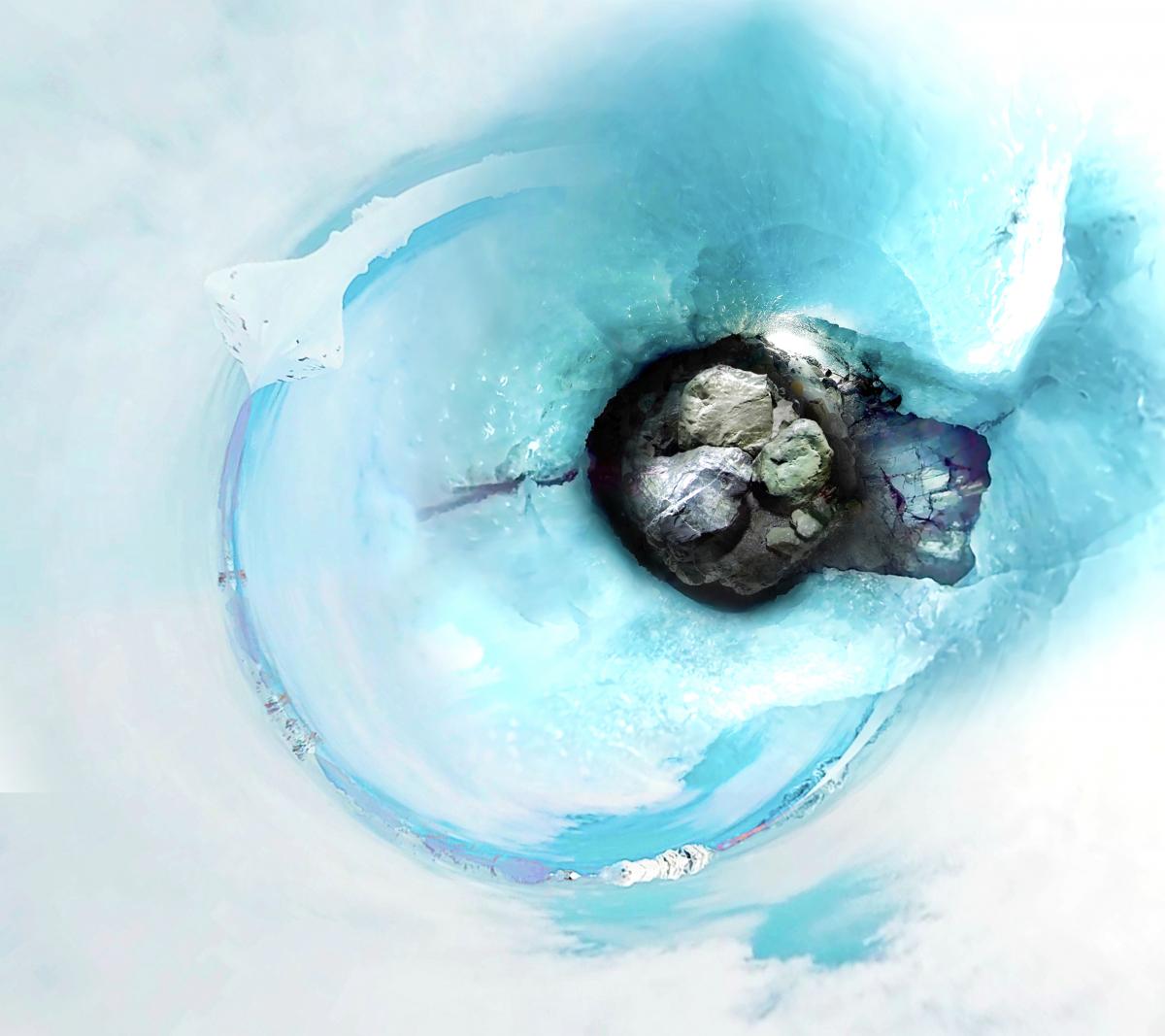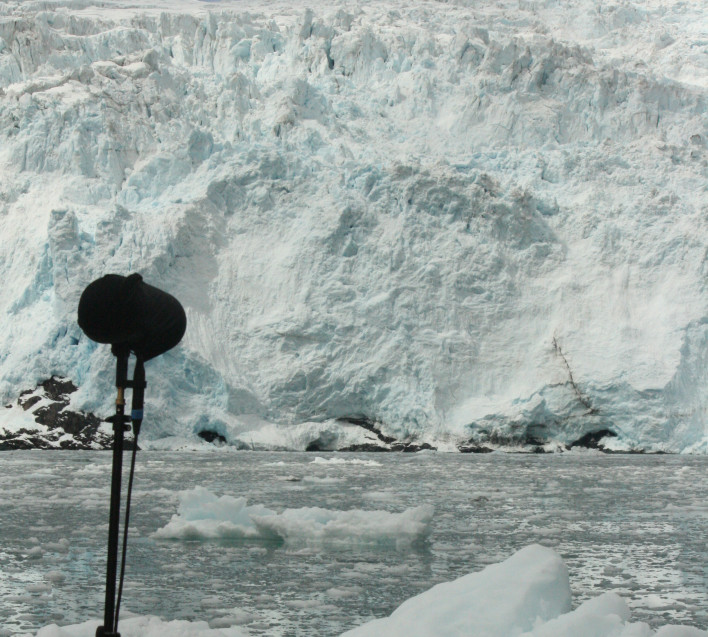Cancelled - Transient Landscapes
In accordance with UVA's latest UVA COVID-19 policy this event is cancelled.
If you have questions, please contact the UVA Music Department at 434.924.3052 or e-mail music@virginia.edu.
Transient Landscapes
A Festival on Human/Nature Interaction and Environmental Arts at the Fralin Museum
Saturday, April 11, 2020 gallery reception opening at 6pm with performance at 7pm
featuring
Transient Landscapes, a performance-based sound installation
created by Matthew Burtner and Matthew Duvall
and Dwelling in the Enfolding, a virtual reality experience
created by Mona Kasra and Matthew Burtner
performed by members of Eighth Blackbird, Beyond This Point, I-Jen Fang and the UVA Percussion Ensemble, Daniel Sender and UVA’s Chamber Music Program and Performance Concentration students,
MICE (Mobile Interactive Computer Ensemble), and UVA’s Ecoacoustic Ensemble
Free and open to the public
 Transient Landscapes is a large-scale participatory sound art project creating a sonic experiential glacier created by Matthew Burtner and Matthew Duvall. The UVA performance of "Transient Landscapes" and the new virtual reality experience Dwelling in the Enfolding, will be held at the Fralin Museum of Art on Saturday, April 11th at 7pm. The event is free and open to the public.
Transient Landscapes is a large-scale participatory sound art project creating a sonic experiential glacier created by Matthew Burtner and Matthew Duvall. The UVA performance of "Transient Landscapes" and the new virtual reality experience Dwelling in the Enfolding, will be held at the Fralin Museum of Art on Saturday, April 11th at 7pm. The event is free and open to the public.
“People have this misconception that glaciers are silent expanses, landscapes frozen in time. But they’re not, at all. They’re a species of incredibly noisy animals, and they’re facing extinction.” - Matthew Burtner
Fossil fuels deep in the earth become atmosphere, a glacier becomes the floodwater in a basement on the other side of the world, coasts become the sea and the sea becomes plastic. We live in an era of Transient Landscapes, the frequency and intensity of our eroding environment amplified by humans through compounding impacts we barely understand. Through creative sound art and ecoacoustics, Transient Landscapes connects the human imagination to the environment.
Transient Landscapes is a fully immersive performance sound artwork for glacier ecoacoustics, percussionists, three groups of participants, audience participation, and amplified field recordings exploring sound as a means of tracking, interpreting and remapping climate change into sound art. Through their actions, participants connect to one another and the work itself by joining nodes of the sonic glacier cast. Moving around the space as if traversing the glacier itself, the public illuminates the experience of the singular and collective body, the relationship between the glacier and the human, connected across the world. You can download a full description of Transient Landscapes including program notes here.
Percussionist/Curator, Matthew Duvall and Eco-Acoustician/Composer, Matthew Burtner combined the ephemeral presence of sound with the material quality of a glacier to create a large-scale performance installation. Matthew Burtner’s ecoacoustic research on the Alaskan glaciers and computer analysis of his own multichannel tidal glacier “sound casts” form the foundation of the work.
Transient Landscapes is created by five groups of performers representing glaciers, tides, melt, introspection, and transience. Minimum participation requires 48 performers (not including the audience, which also plays a role). Transient Landscapes can accommodate, and can be much more impactful, with significantly larger participation.
Education
Transient Landscapes can be complemented with a wide range of educational opportunities. The applied experience of engaging with a performance of Transient Landscapes is deeply enriched by preparatory exposure to topics such as climate science, glaciers, protest art, government policy, geology, in addition to studies in the arts disciplines. This can be accomplished through a range of planned activities such as incorporating performance participation into class syllabi and featuring relevant special topics led by faculty, guest speakers, or representatives from local environmental action organizations. These don’t need to be expensive ventures. Local specialists engaging with audiences can, and should, focus attention on local environmental issues and impacts.
A performance of this type helps academics reach new audiences. Academic research is important and would benefit from reaching the public, but often it gets caught in a closed information loop (academic journals, students, academic conferences, etc.). A project like this provides a unique opportunity to reach a large, non-academic audience at a single encounter. Humans are moved more by feelings than by information. This performance creates a bridge, helping the public feel climate change.
“We could marvel at the patterns and variety of pitch, tone quality and rhythm and let go of the need to evaluate each segment…” - Sarasota Herald Tribune, World Premiere, Oct 20, 2018
 Ecoacoustics
Ecoacoustics
Matthew Burtner describes his body of work as Musical Ecoacoustics and defines the discipline as follows:
“Musical Ecoacoustics embeds environmental systems into musical and performance structures using new technologies. Ecoacoustic music derives methodology from abstracted environmental processes, remapping data from the ecological into musical domain. It draws on techniques of sonification and soundscape composition (Truax, Westerkamp, Keller and others). The data from nature may be audio information (from wind or ocean waves for example), or it may be some measurable parameter such as temperature, geological change, etc. Going beyond direct sonification, I develop a syntax on the basis of the recorded natural processes, and create new patterns conforming to this syntax. My interest in ecoacoustics arises from my experiences growing in the Arctic of Alaska, on the fishing boats on Alaska’s Southwest coast, and in the mountains above Anchorage. Snow, ice, wind and sea figure prominently in my work. I developed ecoacoustic techniques in works such as Mists (1995) for stones and noise, and Sikuigvik (the time of ice melting) (1997) for piano and large ensemble in which the process of ice melting is used as a musical form. The technique came to fruition in the first of my large-scale Alaskan opera/theater pieces, Ukiuq Tulugaq (Winter Raven) (1999-2002), in which systems of snow, wind and climate generate musical form and material.”
“The experience of collaboratively creating a sonic glacier forms a community of people who come to realize that they have created something together. Through this shared experience they become indelibly connected to that time and place.” - Matthew Duvall
For the biographies of the performers and composers please visit Transient Landscapes Bios.
The Fralin Museum of Art is located at 155 Rugby Road, one block north of the Rotunda, on the Grounds of the University of Virginia. Select parking available behind the Museum and in the A-6 lot adjacent to Madison Bowl. Cash metered parking available in Culbreth Garage. FREE after 5 pm and on weekends. The Museum also validates parking tickets from the Central Grounds Garage on Emmet Street.
All programs subject to change. Please call 434.924.3052 for more information.
